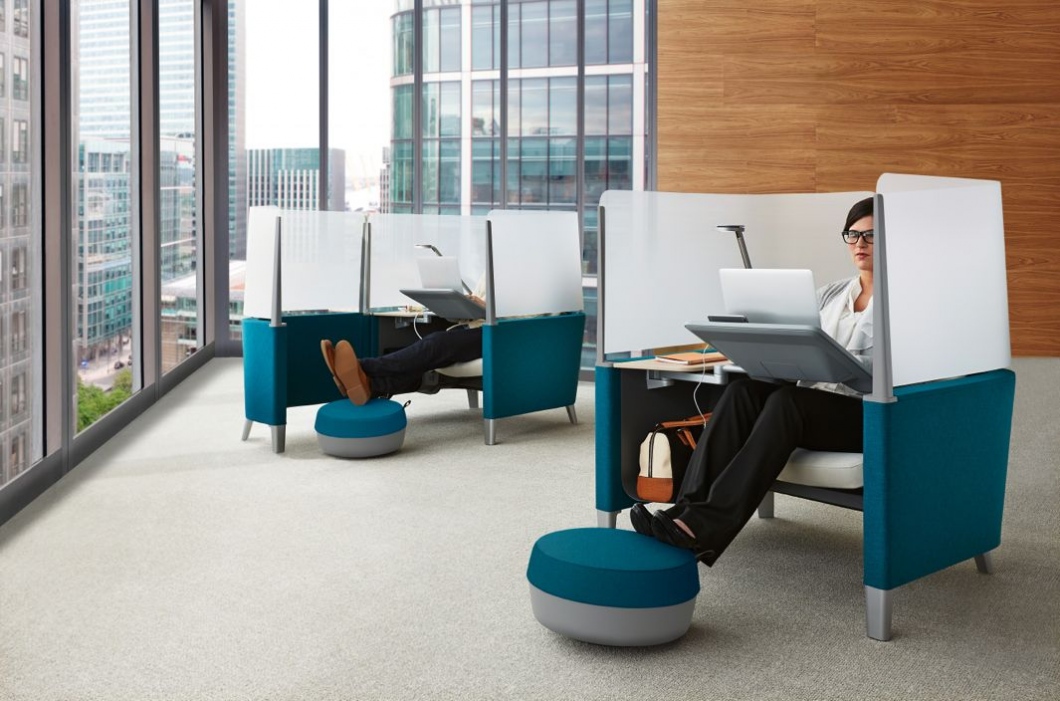It was only in the middle of 20th century that designers started to realize that designing office spaces and furniture pieces can be a lucrative business. Prior to this, designers focused their efforts on office architecture and not on interiors and furniture.
According to historical accounts, it was designer George Nelson who first recognized that there is a possible market for office space and office furniture designing. Being the head designer for Herman Miller, a major manufacturer of furniture and equipment, Nelson spearheaded efforts to create a new industry of office space designing and furniture manufacturing. In 1947, Nelson headed Miller’s program dedicated in introducing workstation-type of office space to the market. After more than a decade, in 1960, Nelson worked with another designer by the name of Robert Probst, and developed the “Action Office 1,” which considered the physical and psychological needs of office workers. Since then, the mindset of the employment sector for office spaces has changed. With the office designing boom, office employees started to associate their workflow with working together in a large room. Since then, designers and manufacturers have embarked on the new trend, focusing more on office interiors, furniture, and equipment.
As office designing became a staple niche in architecture and interior designing, furniture pieces also witnessed gradual to drastic changes. Presently, all offices are equipped with vital to trivialoffice furniture including chairs, office desks, file cabinets, bookcases, safes, computer furniture, and many more. When the market became accepting to furniture and equipment, innovations have begun. Decades ago, production of furniture pieces was only focused on producing durable pieces, not taking into consideration style and comfort. Today, with the furniture revolution anew, designers and manufacturers are focusing their efforts in producing not only quality but also comfortable and stylish furniture pieces. Hence, changes in style and design are very apparent in many offices.
Office ergonomics is one of the important factors designers and manufacturers consider when producing furniture pieces and equipment. With this, new breed of office fixtures is becoming very popular in the market. Companies and businesses are not only looking for quality and style but also comfort as they want their employees to feel comfortable while working because it gives them a boost when it comes to productivity and satisfaction.
The Centers for Disease Control and Prevention (CDC) has described ergonomics as “the scientific study of people at work. The goal of ergonomics is to reduce stress and eliminate injuries and disorders associated with the overuse of muscles, bad posture, and repeated tasks. This is accomplished by designing tasks, work spaces, controls, displays, tools, lighting, and equipment to fit the employee´s physical capabilities and limitations.” With this description, it could be said that comfort and safety should be a top priority when choosing the furniture pieces and details for any office.
There are many things employers could do to achieve comfort in the office. It could be by investing on more comfortable office furniture or by changing the color theme of the office, or by conducting a seminar on proper posture while performing job duties. Simply put, there are numerous ways on how to make an office ergonomic for employees.
Offices have witnessed drastic changes in the past couple of decades, and there is no hint that more changes will not happen in the future. It is expected that bolder and more innovative changes in the office settings will take place in the next decades, further improving offices’ style and prioritizing comfort and safety for employees. In a nutshell, the office spaces and furniture continue to improve in time, and we can only expect more innovations in the near future.

